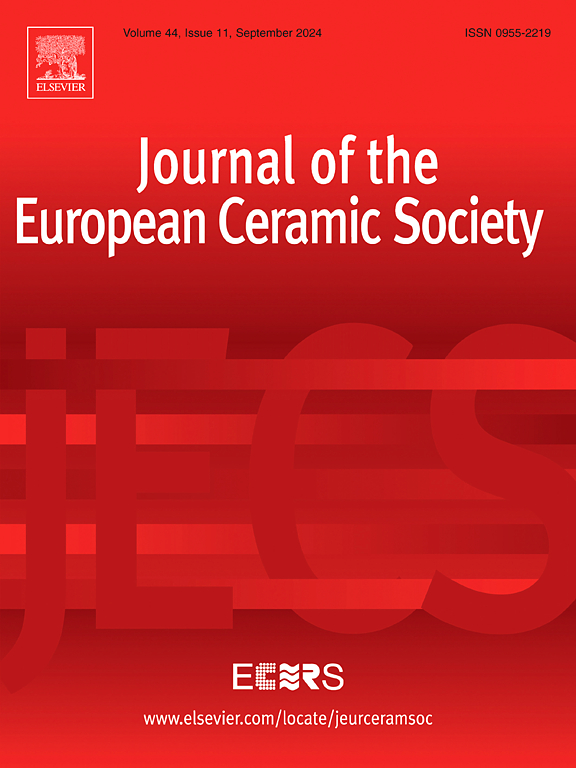Effect of pore architecture on quasistatic compressive deformation of freeze-cast porous alumina scaffolds
IF 5.8
2区 材料科学
Q1 MATERIALS SCIENCE, CERAMICS
Journal of The European Ceramic Society
Pub Date : 2025-02-05
DOI:10.1016/j.jeurceramsoc.2025.117263
引用次数: 0
Abstract
We investigated the influence of various pore architectures namely lamellar, dendritic and isotropic on uniaxial compressive response of freeze-cast porous alumina (platelets) scaffolds at quasistatic strain rate (10−4 s−1). The compressive response of the highly porous (>85 %) scaffolds exhibited cellular-like, damageable failure behaviour independent of pore structure. We suggest that high pore content (vis-à-vis less solid walls fraction) restricts the propagation of long, macroscopic cracks by crack-crack interaction along the lamella walls. This results in multiple fragments of the lamella walls by gradual crushing, a fundamental characteristic of cellular-like failure behaviour. Comparison of our experimental results with honeycomb out-of-plane deformation model derived by Gibson-Ashby further revealed that buckling induced elastic instability of the lamella walls is the strength (compressive) limiting mechanism. Microscopic observation showed extensive local damage of lamella walls (while the overall scaffolds remain intact at macroscopic level), which further confirms localized elastic instability (buckling) within lamella walls.
求助全文
约1分钟内获得全文
求助全文
来源期刊

Journal of The European Ceramic Society
工程技术-材料科学:硅酸盐
CiteScore
10.70
自引率
12.30%
发文量
863
审稿时长
35 days
期刊介绍:
The Journal of the European Ceramic Society publishes the results of original research and reviews relating to ceramic materials. Papers of either an experimental or theoretical character will be welcomed on a fully international basis. The emphasis is on novel generic science concerning the relationships between processing, microstructure and properties of polycrystalline ceramics consolidated at high temperature. Papers may relate to any of the conventional categories of ceramic: structural, functional, traditional or composite. The central objective is to sustain a high standard of research quality by means of appropriate reviewing procedures.
 求助内容:
求助内容: 应助结果提醒方式:
应助结果提醒方式:


